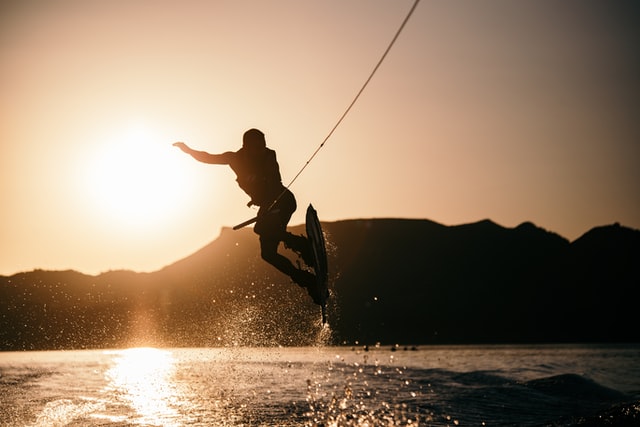Wakeboard Buying Guide: Features You Should Look For

Having the best kind of wakeboard doesn’t always or only have to do with how it looks. You can litter it with decals or choose one with a nifty steez (and we’re totally not against these), but they have nothing to do with its performance.
So, with help from the pro wakeboarders at the hands-down awesome pro wakeboard shop, we’ve come up with a short wakeboard buying guide for you to use as you go wakeboard-scouting.
Wakeboard Must-Have Features
Level Label
There are three general classifications when it comes to wakeboards, as there are, too, with wakeboarders: Beginner, Intermediate, and Expert. Authentic boards have these classifications frequently marked on the underside of the board.
Newer makes may not have such labels on any part of the equipment. However, it should be specified along with the description of the product itself. Its specs, manufacturer’s information, size chart, etc.
Having said that, this guideline isn’t set in stone. You don’t have to go full-on pro board for righteous rides. But if the size suits you perfectly regardless of board level, it’s still a good choice. And vice versa.
Size
We’ve given a bit of a brief introduction to how crucial wakeboard size is to the rider. If a board is too small, a.k.a. too short in parallel to your weight, it’s likely that you’ll easily sink. Even when you’re on flat water.
In contrast, one that’s too long and large against your weight will prove tougher than tough to steer. You might even experience rogue spins if the board is uncontrollable like that.
Here’s a standard and globally accepted size chart you can study:
| Rider Weight (lbs) | Wakeboard Length (cm) |
| < 100 | <130 |
| 90-150 | 130-134 |
| 130-180 | 135-139 |
| 170-250 | 140-144 |
| 200-275+ | > 144 |
Second-Skin
Besides the dermis that’s wrapped around your bones and muscles, the skin of a wakeboard is to be given importance. “Skin” speaks of the material of the watersport instrument. The typical materials of many wakeboard types are either foam or wood, with a majority catering to the first due to its economical cost and light-weightedness. To add, foam boards are usually covered with fibreglass to enhance their durability.
On the other hand, or should we say, “on the other foot” (see what we did there?), wood is preferred by those who want that extra snap because of the material’s stiffness, in comparison to foam.
Get Your Rocker On
Not in music (although we’re definitely not opposed to this, mates), but of your board. A “rocker” is known as the bend degree on the gizmo’s profile. It’s divided into two categories: Continuous and Three-Stage.
All you need to remember is that a continuous rocker has better predictability, and it curves seamlessly. A three-stage rocker, on the contrary, has an aggressive and solid lift. Think “skateboard”, with this baby.
Fanning For Fins
Wakeboard fins aid in bringing the board towards a specific direction, instead of having it waddle around aimlessly. Much like the rudder of a water vessel, fins add to the board’s controllability while serving as a kind of suction to steady it on the blue.
There’s no specific rule regarding this. But deeper fins are highly recommended for beginner boards.

